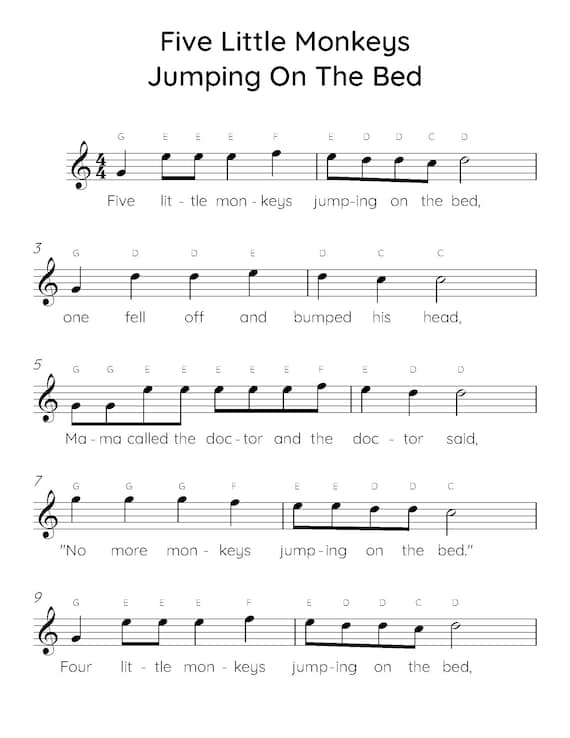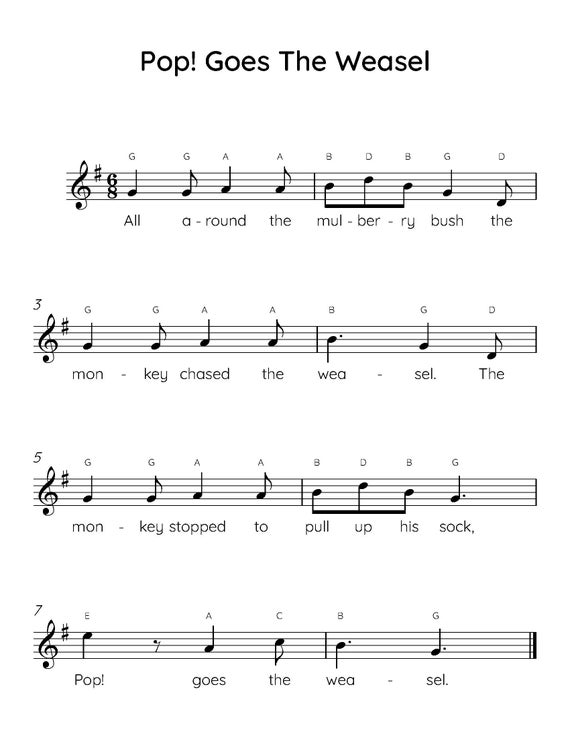Learning to play the piano can be rewarding and fun. Starting with easy songs makes the journey smoother.
For beginners, simple tunes are key to building confidence and skill. Finding the right songs can spark your interest and keep you motivated. This guide highlights the top five piano songs that are easy to learn, perfect for novices. Whether you’re a young student or an adult beginner, these songs will help you enjoy your practice sessions.
Dive into these melodies, and soon you’ll be playing with ease and joy.
Introduction To Easy Piano Songs
Discover the joy of playing music with the top 5 easy piano songs. These selections offer simple melodies and are perfect for beginners. Enjoy learning tunes that boost your confidence and skill.
Learning to play the piano can be a rewarding experience. Beginners often find it challenging to start with complex songs. Easy piano songs make the learning process smoother. They help build confidence and skills without overwhelming the player. These songs are perfect for new learners.
Why Choose Simple Songs?
Simple songs are less intimidating for beginners. They often have repetitive patterns and fewer notes. This makes them easier to memorize. Simple songs also help in understanding the basics of piano playing. They provide a foundation for more complex pieces later.
Benefits Of Learning Easy Songs
Learning easy songs has many advantages. It boosts confidence in new players. Playing simple tunes can be satisfying and fun. It helps improve hand coordination. Easy songs also enhance reading skills of musical notes. They allow beginners to practice without frustration. This keeps the motivation high and encourages continuous learning. “`

Credit: www.hoffmanacademy.com
Prelude In C Major By Bach
Learning the piano can be both fulfilling and enjoyable. One of the best songs to start with is the Prelude in C Major by Bach. This piece is famous for its elegant simplicity and timeless beauty. Even beginners can appreciate its harmonious structure.
Song Background
Johann Sebastian Bach composed the Prelude in C Major as part of his collection, “The Well-Tempered Clavier.” This collection includes preludes and fugues in all major and minor keys. The Prelude in C Major stands out due to its clear, flowing melody and repetitive patterns. It showcases Bach’s genius in creating music that is both intricate and accessible.
Tips For Learning
Start by listening to the Prelude in C Major several times. This helps you understand the flow and structure of the piece. Next, break the song into smaller sections. Practice each section separately until you feel confident.
Focus on maintaining a steady tempo. Use a metronome if necessary. Pay attention to hand positioning and finger movements. Efficient hand placement can make playing smoother. Remember, practice regularly but take breaks to avoid fatigue.
Once you master the basic notes and rhythm, try to add dynamics. Vary the volume and intensity to bring out the emotional depth of the piece. Learning the Prelude in C Major by Bach is a rewarding experience for any aspiring pianist.
Clair De Lune By Debussy
Claude Debussy’s “Clair de Lune” is a beautiful piano piece. It captures the essence of the moonlight through music. This song is part of Debussy’s Suite Bergamasque. Many piano enthusiasts love playing this piece.
Song Background
Debussy composed “Clair de Lune” in 1890. Its name means “light of the moon” in French. The piece is inspired by poetry. Specifically, a poem by Paul Verlaine. The music reflects the poem’s imagery. It’s dreamy and peaceful. It has a gentle rhythm and flowing melody. “Clair de Lune” is one of Debussy’s most famous works.
Tips For Learning
Start by listening to the song many times. Pay attention to its flow. Practice the right-hand melody first. It carries the main tune. Then, add the left-hand accompaniment. Focus on the harmony and balance. Take it slow. Speed up only when comfortable.
Use a metronome to keep time. This helps maintain a steady pace. Break the piece into sections. Practice each section separately. Then, combine them. Use sheet music. It guides your fingers on the keys. Remember to relax your hands. Avoid tension while playing.
Watch video tutorials. They offer visual guidance. Follow along with the instructor. Repeat difficult parts until perfect. Be patient. “Clair de Lune” requires practice and dedication. With time, you’ll play it beautifully.
Für Elise By Beethoven
‘Für Elise’ by Beethoven is one of those timeless pieces that almost every piano enthusiast wants to master. It’s a song that evokes emotion and offers an accessible challenge for beginners. With its enchanting melody, it can be a delightful addition to your repertoire.
Song Background
Beethoven composed ‘Für Elise’ in 1810, but it was published posthumously, over 40 years later. The song’s name is a bit of a mystery. Some suggest it might have been dedicated to a woman named Elise, but the true identity is still debated. It’s a bagatelle, which means it’s a short, lighthearted composition. This makes it perfect for budding pianists looking to start with classical music.
Tips For Learning
Start by breaking down the piece into manageable sections. The opening motif is iconic and relatively simple. Focus on mastering those first few bars before moving on. Practice slowly, paying attention to finger positioning to ensure smooth transitions.
Use your metronome to keep a steady rhythm. This helps especially when you tackle the faster sections later. Don’t rush; consistency is key. Remember, even Beethoven started somewhere, so take your time to get it right.
Engage your emotions as you play. Consider what the song means to you. Does it evoke a memory or a feeling? Let that guide your expression as you learn. It’s not just about playing notes; it’s about telling a story through music.
What does ‘Für Elise’ say to you personally? Does it remind you of a special moment or person? Use these thoughts to enhance your practice, making it more meaningful. This emotional connection can transform your learning experience.
Remember to enjoy the journey. Playing piano isn’t just about technical prowess; it’s about expressing yourself and connecting with the music. Keep experimenting with different dynamics and tempos to find your unique style.
River Flows In You By Yiruma
‘River Flows in You’ by Yiruma captivates listeners with its gentle melody. This song is a favorite among piano enthusiasts for its emotional depth. Its simplicity makes it accessible for beginners who want to learn a beautiful piece. Many people recognize its soothing sound from weddings and personal playlists.
Song Background
Yiruma, a South Korean pianist, composed ‘River Flows in You’ in 2001. The song became popular after being associated with the Twilight saga. Although not featured in the movie, fans embraced it for its romantic feel. Yiruma’s ability to create emotive melodies resonates with audiences worldwide.
The piece is often described as a modern classic. Its popularity continues to grow, making it a staple in piano repertoires. The song’s gentle pace and flowing structure appeal to many aspiring pianists.
Tips For Learning
Start by listening to the song several times. Familiarize yourself with its rhythm and flow. Break the song into smaller sections to practice. Focus on mastering each segment before moving on. Pay attention to the dynamics, soft and loud parts.
Use a metronome to keep a steady pace. Practice slowly at first. Gradually increase your speed as you gain confidence. Watch tutorials online for visual guidance. They can help you understand finger placements.
Regular practice is key. Spend a few minutes each day on the song. This helps build muscle memory and improves your performance. Enjoy the process of learning. Appreciate the beauty of the melody as you play.
Let It Be By The Beatles
“Let It Be” by The Beatles is one of the top five piano songs to learn easily. Its simple chords make it perfect for beginners. This classic tune is a favorite for its heartfelt lyrics and memorable melody.
Learning to play the piano can be both fulfilling and fun, especially when starting with timeless classics. One such song is “Let It Be” by The Beatles. This beautiful and soulful tune is not only a joy to play but also relatively easy for beginners.
Song Background
“Let It Be” was released in 1970 and quickly became one of The Beatles’ most iconic songs. Written by Paul McCartney, the song was inspired by a dream he had about his late mother. Its heartfelt lyrics and soothing melody make it a favorite among piano enthusiasts. The song is set in the key of C major, which is ideal for beginners. It features simple chords and a memorable melody. This simplicity allows you to focus on technique without getting overwhelmed.
Tips For Learning
Start by familiarizing yourself with the chord progression. The main chords you’ll need are C, G, Am, and F. These are basic chords that you can easily practice. Break the song into sections. Focus on mastering the verse first before moving on to the chorus. This step-by-step approach keeps you from feeling overwhelmed. Use online tutorials for guidance. Websites like YouTube have step-by-step videos that can be incredibly helpful. Seeing someone else play can give you visual cues and tips you might not get from sheet music alone. Practice regularly. Even just 15 minutes a day can make a huge difference. Consistency is key to mastering “Let It Be.” Do you have a favorite part of the song? Focus on that section first. Playing something you love can keep you motivated and make practice more enjoyable. Remember to enjoy the process. Learning to play “Let It Be” is not just about getting the notes right; it’s about feeling the music. So take your time and savor every moment. What other Beatles songs would you like to learn on the piano? Share your thoughts in the comments!
Practice Strategies
Learning piano songs can be fun and rewarding. With the right practice strategies, you can improve quickly. Let’s explore some effective methods to help you master these songs.
Setting A Practice Schedule
Consistency is key to progress. Create a practice schedule that fits your daily routine. Aim for short, focused sessions. Practice every day, even if it’s just for 15 minutes.
Break down your practice into manageable parts. Focus on different sections of the song. Start with easier parts, then move to more challenging sections. This keeps your practice varied and interesting.
Using Proper Technique
Good technique is essential for playing piano songs well. Sit properly at the piano. Keep your back straight and shoulders relaxed. Position your hands correctly over the keys.
Practice finger exercises regularly. This improves your dexterity and strength. Use a metronome to keep a steady tempo. This helps you play rhythmically and accurately.
Always start slow and gradually increase speed. Focus on accuracy before speed. This ensures you play each note correctly.

Credit: www.etsy.com
Staying Motivated
Learning piano can be an exciting journey, but staying motivated is key to progress. When you’re practicing the top 5 best piano songs, it’s essential to keep your spirits high. How do you maintain motivation when the initial excitement wears off?
Tracking Progress
One effective way to stay motivated is by tracking your progress. Keep a journal or a simple log of your practice sessions. Note down what songs you worked on and any improvements you noticed.
Seeing tangible results can boost your confidence. It also helps you recognize patterns in your learning and identify areas needing more focus. Have you ever looked back at your progress and felt proud of how far you’ve come?
Rewarding Milestones
Setting milestones and rewarding yourself when you achieve them can be a game-changer. Plan small rewards for mastering each song or technique. It could be a treat or a break to relax.
Celebrating these milestones keeps the learning process enjoyable. Remember the joy of your first successful performance or when you nailed a challenging piece? Use those moments to fuel your drive.
Staying motivated requires consistent effort and creativity. How will you keep your piano journey exciting and fulfilling?

Credit: www.etsy.com
Frequently Asked Questions
What Is The Easiest Song To Learn On Piano?
“Twinkle, Twinkle, Little Star” is the easiest song to learn on piano. It has simple notes and a familiar melody.
What Is The Number 1 Piano Song?
The number 1 piano song is “Clair de Lune” by Claude Debussy. It is renowned for its beautiful melody and emotional depth.
What Is The 5 Key Piano Song For Beginners?
The five key piano songs for beginners are “Twinkle Twinkle Little Star,” “Mary Had a Little Lamb,” “Ode to Joy,” “Jingle Bells,” and “Happy Birthday. “
What Song Should I Learn To Piano?
Learn “Für Elise” by Beethoven. It’s iconic, beginner-friendly, and enhances finger agility. “Clair de Lune” by Debussy is great for intermediate learners.
Conclusion
Learning piano can be fun and rewarding. The songs shared are perfect starters. Each tune offers a blend of simplicity and beauty. Try them, and you’ll see progress soon. Remember, practice makes perfect. Enjoy each note and the journey of playing.
These songs build confidence and skill. Soon, you’ll play more complex pieces. Keep exploring and experimenting with different melodies. Music is a wonderful world waiting for you. Embrace it with passion and persistence. Let your fingers dance across the keys.
Your piano adventure is just beginning. Stay curious and keep playing.
